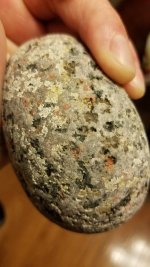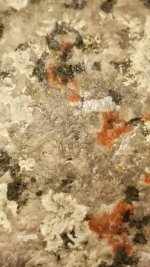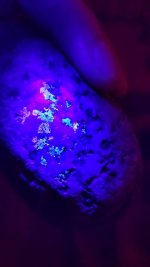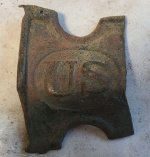stdenis_jd
Hero Member
So I found this guy in the middle of the lower peninsula, Michigan - it's obviously a syenite [plagioclase, feldspathoid (orange fluorescent sodalite), k-spar, biotite] familiarly called "yooperlite" but it displays minute amounts of orange fluorescence from the sodalite, but a widespread bright bluish-white fluorescence on LW UV (no reaction to SW).
I've posted this guy on a different site and didn't get the correct answer as to what this fluorescent mineral is. A great idea from a geologist was possibly natrolite polymorph after nepheline, but it didn't pass the HCL test (natrolite should partially degrade to a "gummy" substance). It also is not calcite which was my first thought since it did not react at all to HCL.
Hardness test is pretty much irrelevant since it appears to be a pretty thin film and will undoubtedly produce a false reading and of course SG is out of the question. Any other ideas? I'm thinking it must be original nepheline since these syenites are quite likely "nepheline syenites" anyway.
**EDIT** nevermind nepheline, I forgot it doesn't fluoresce



I've posted this guy on a different site and didn't get the correct answer as to what this fluorescent mineral is. A great idea from a geologist was possibly natrolite polymorph after nepheline, but it didn't pass the HCL test (natrolite should partially degrade to a "gummy" substance). It also is not calcite which was my first thought since it did not react at all to HCL.
Hardness test is pretty much irrelevant since it appears to be a pretty thin film and will undoubtedly produce a false reading and of course SG is out of the question. Any other ideas? I'm thinking it must be original nepheline since these syenites are quite likely "nepheline syenites" anyway.
**EDIT** nevermind nepheline, I forgot it doesn't fluoresce



Last edited:








